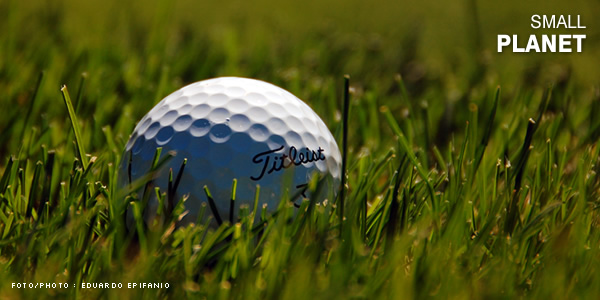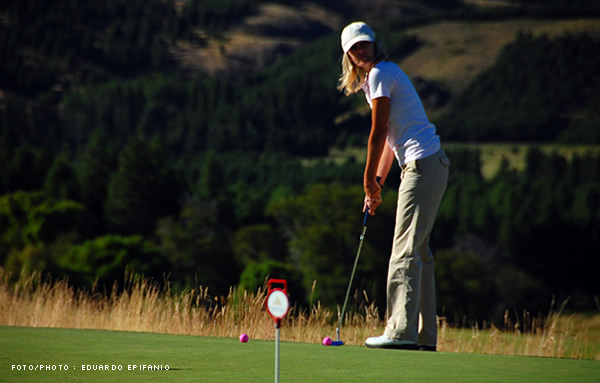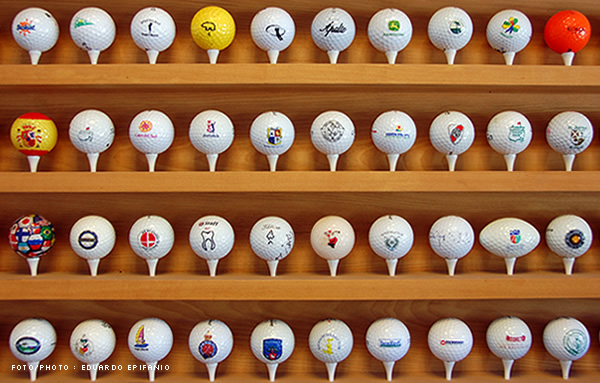GOLF in Argentina
The Golf Balls

![]() arious factors affect the behavior of the ball and the changes that may take place have effects on the cover, the dimples and the core.
arious factors affect the behavior of the ball and the changes that may take place have effects on the cover, the dimples and the core.
The commonest factor to be taken into account when choosing a ball is the number of layers. We can find balls with one, two, three layers or the so-called multilayer ball. Nowadays, one-piece balls are used for practice. Two-piece balls are used by amateurs for their duration and scope. They are hard and generate scarce spin. Three-piece balls aim at providing the player with a greater sensation and spin. They are less resistant to cuts. Their multi-layers attempt to combine duration, feel and distance.
The ball maximum weight is 45.9 grams. Nevertheless, any lower weight is allowed. This is due to the fact that a heavier ball may reach a greater distance. Besides, lighter balls rise higher with a slow swing. It is possible to find illegal balls in the market as they surpass the weight limit and super-light balls, legal for those who have a slow swing.
A ball may not be smaller than 6.55 cm. A smaller ball flies a longer distance as it offers a lower resistance. Extra large balls are legal and they are designed to reduce the hook and the slice.

Ball covers are made are mainly with Balata, Surlyn, Zylin and Elastomer.
THE SURLYN
It is the most popular component in ball covers as a result of its long durability. Surlyn is the trade name for a group of thermoplastic resins developed by the Dupont Corporation. At present, softer versions of Surlyn are available.
THE BALATA
This kind of rubber is extracted from the ficus. It has extraordinary touch and elasticity. At present, synthetic balata is used. Balata cover balls are used by players who search a greater feel in exchange for a shorter duration of the ball and a higher risk of cutting it with a wrong stroke.
THE FINISH
The painting is mixed with the Surlyn in the process of making the ball. Afterwards, the ball is painted with two layers of polyurethane. The finish is given by an optical polish.

THE TWO-PIECE BALL
Traditionally considered as a ball to reach a long distance. Modern technology has managed softer designs which are even used by professionals.
THE THREE-PIECE BALL
Traditionally used by players willing to sacrifice a couple of meters to achieve touch and effect. The new designs have supressed this exchange.
THE MULTI-LAYER BALL
Each layer has the mission to improve a kind of stroke. A core to get distance with the driver, intermediate layers for strokes with iron and covers for a maximum feel and spin.
© 2003-2025 Total or partial reproduction forbidden. Derechos de Autor 675246 Ley 11723
Who we are | Contact us | Press and Publicity | Terms and Conditions



